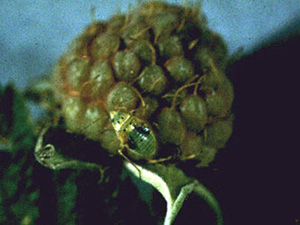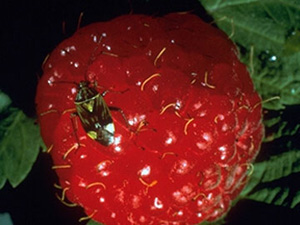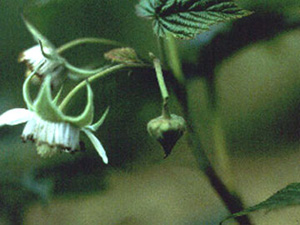Tarnished Plant Bugs and Strawberry bud weevils may cause various types of physical damage to raspberry buds and flowers.
Tarnished Plant Bug (TPB) feeding is a common cause for crumbly, misshapen fruit. TPB adults and nymphs (Lygus lineolaris) feed on buds and flowers. They also damage developing fruit.


More raspberry Tarnished Plant Bug information
Strawberry bud weevil (Anthonomus signatus) or clipper affects raspberries, as well as strawberries and blueberries.

Bud weevils cut off buds in early spring, sometimes causing serious losses in fruit production. Dangling buds or small round holes in flower petals are indication of Clipper/Bud Weevil damage.



